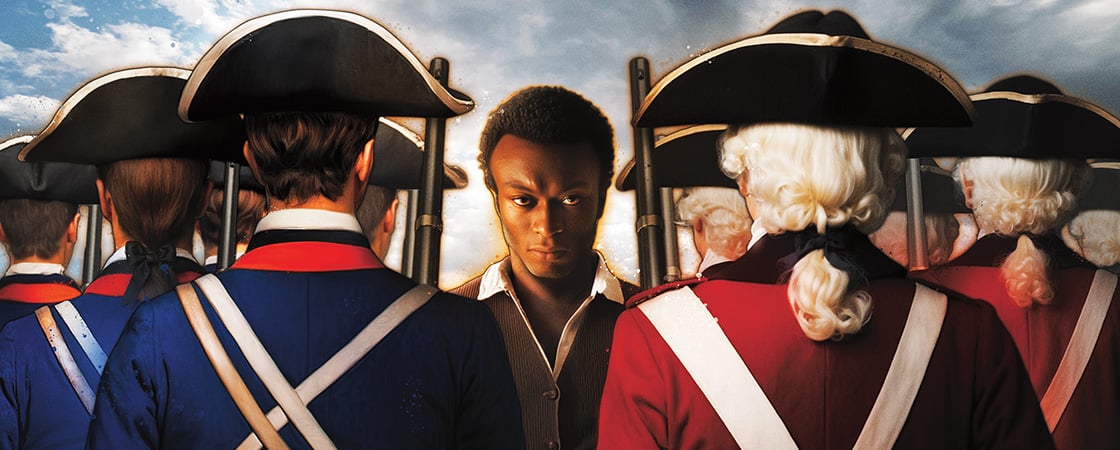Like all great spy stories, this one is full of mystery.
Here’s what we know. On a spring day in 1781, a man named James did just about the most dangerous thing a person can do in a time of war: He crossed into enemy territory. It was six years into the American Revolution. A powerful British army was marching through Virginia, trying to crush the American rebellion once and for all.
James raced across miles of fields and forests. He scrambled over rocks and fallen trees, and splashed across rushing streams. Finally, he found what he was searching for—the canvas tents and smoking campfires of a British army camp. Armed soldiers patrolled the grounds. James, who carried no weapon, must have felt a moment of terror. The safe thing would have been to turn around.
But he was not there to play it safe.
James walked boldly into the camp. When the British commanders demanded an explanation, James had his story ready: He’d been born into slavery nearby, he explained to them. He’d just escaped from his enslavers and wanted to join the British side. He had valuable information to offer.
After all, he’d grown up in this part of Virginia and knew the local geography far better than any British soldier. He could show them paths through the woods and shallow spots in the rivers. British generals were eager for this sort of intelligence, so they welcomed James into their camp.
It was a decision they would come to regret.
Like all great spy stories, this one is full of mystery.
It was a spring day in 1781—six years into the American Revolution. A man named James did something very dangerous. He crossed into enemy territory. A powerful British army was marching through Virginia, trying to crush the American rebellion.
James raced across miles of fields, forests, and streams. Finally, he found what he was searching for—a British army camp. Armed soldiers patrolled the grounds. James, who carried no weapon, must have felt a moment of terror. The safe thing would have been to turn around.
But he was not there to play it safe.
James walked boldly into the camp. British commanders demanded an explanation. James had his story ready: He’d been born into slavery, he told them. He had just escaped from his enslavers and he wanted to join the British side. He had valuable information to offer.
After all, he had grown up in this part of Virginia. He knew the local geography better than any British soldier. He could show them paths through the woods and shallow spots in the rivers. British generals were eager for this sort of intelligence. They welcomed James into their camp.
It was a decision they would later regret.



